This widespread and common, well camouflaged Salticid is usually found wandering on foliage in dry eucalypt scrub to rainforest margins, even grasslands, throughout coastal Queensland and NSW, possibly elsewhere. Well camouflaged. The body is a cryptic pattern of buff-cream to brown with patches of browns and oranges. The upper surface darker on the sides, paler centrally. Legs rather stout, especially leg I. Clypeus, or face below eyes orange, with white hairs in the female. The male's cephalothorax is nearly the same length as the abdomen and considerably broader, widest at the fovea. A fringe of orange hair around the anterior median eyes of the male give the effect of tubes of hair and together give the effect of a stepped-down shelf across the leading edge of the cephalothorax. The legs are banded white and dark with the femurs decorated at their outer ends with an obvious white band. The abdomen in both males and females is longish and gradually tapered to the spinnerets, and similarly coloured whitish brown with a mottled appearance. The male's palp is characteristic and easy to recognise from drawings. The female looks like the male with a comparatively longer, more patterned abdomen and less of the fringing hairs around the eyes. The epigynum is very large and simple, not very sclerotized. Internally there are long, membranous coils of insemination ducts and strongly sclerotized pear-shaped spermathecae (storage chambers) with internal spiralled channels. This jumping spider was first described by Keyserling as Plexippus. It was renamed as Trite by Simon then found to be a new genus by Zabka In 2003. The name means "like Philaeus", another genus with somewhat similar male palps. They are not closely related. ♀ 4mm ♂ 4mm
- Male 230110 from above
- Male 1710 from above in alcohol
- Male 1710 from above showing palp
- Male 1710 palp underneath
- Male 1710 palp underneath
- Male 1710 palp top (dorsal) showing white hairs and tibial apophysis
- Male 1710 palp directly under showing massive apophysis
- Male 1710 back (dorsal) showing white hairs
- Male 230110 facing showing palps
- Male from above
- Male GJA-5489 from above
- Female GJA5420 from above
- Female 1710 adult in alcohol from above
- Female facing showing white hairs on clypeus
- Female 1710 side view
- Female 1710 side view, white hairs faded, more orange
- Female 1710 underneath
- Female epigynum
- References
Male 230110 from above
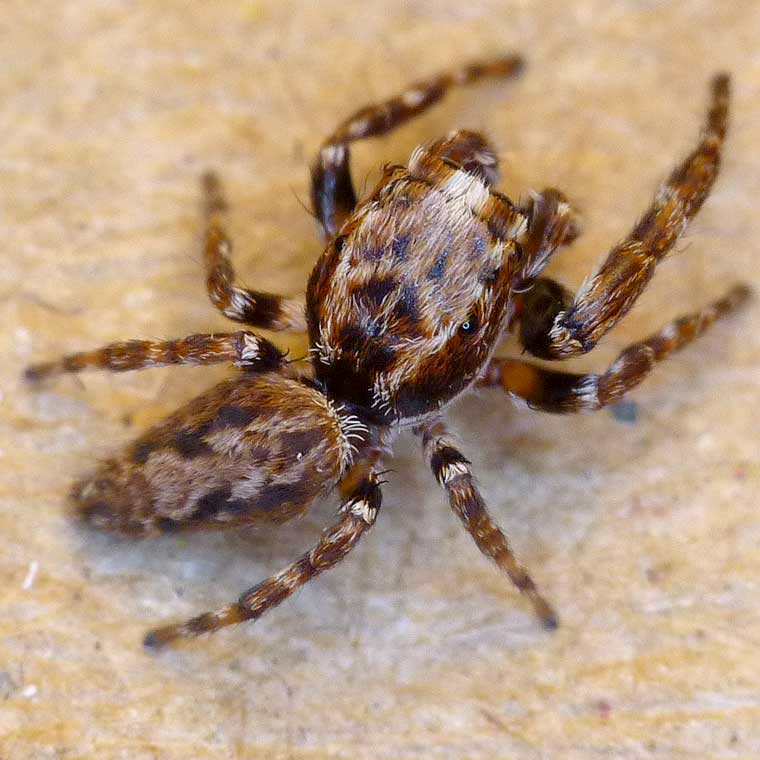
Male 1710 from above in alcohol
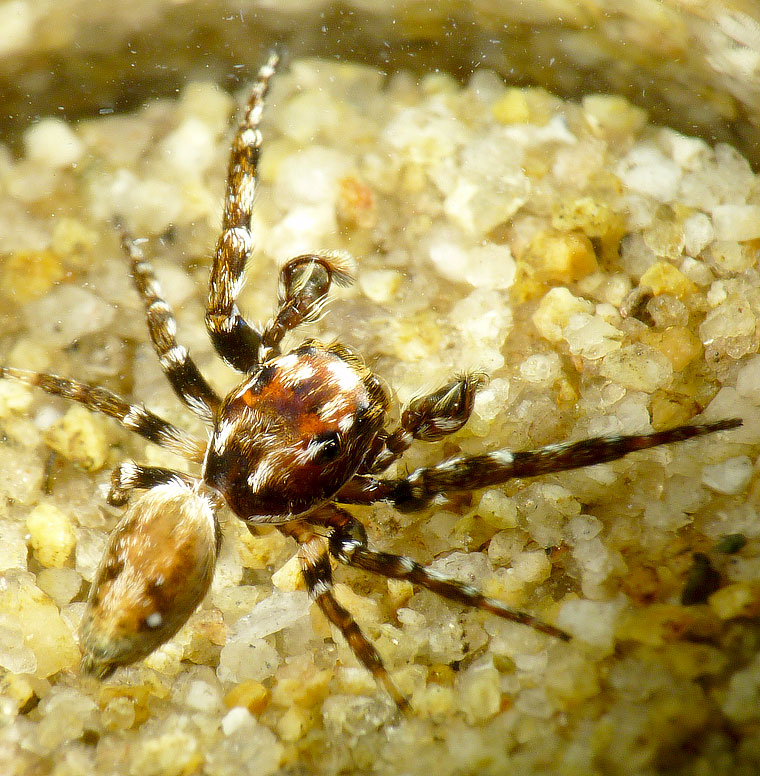
Male 1710 from above showing palp
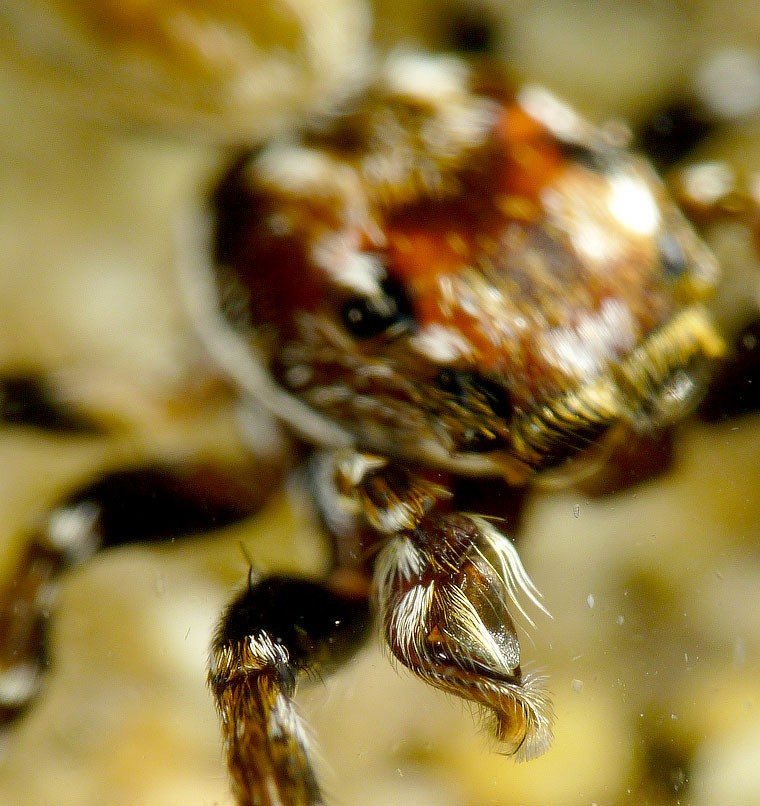
Male 1710 palp underneath
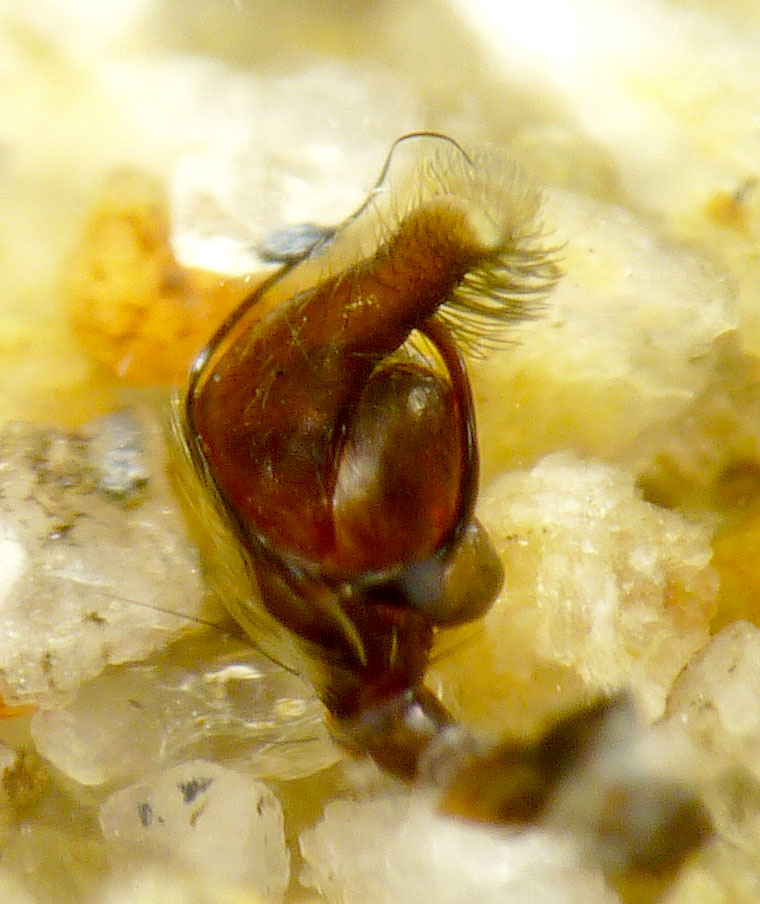
Male 1710 palp underneath

Male 1710 palp top (dorsal) showing white hairs and tibial apophysis
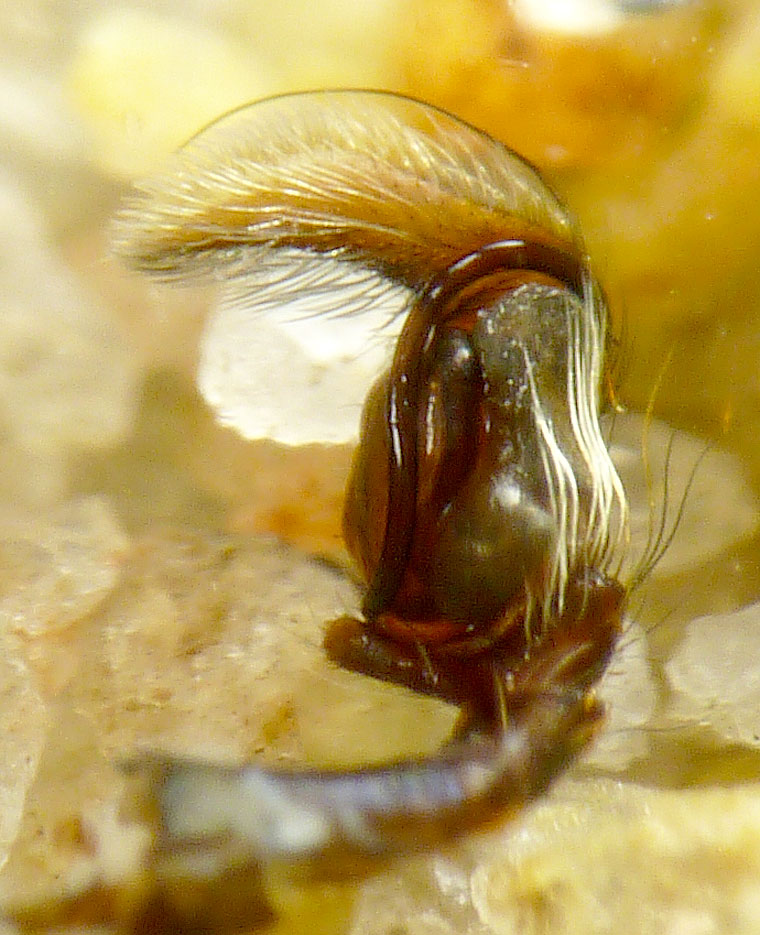
Male 1710 palp directly under showing massive apophysis
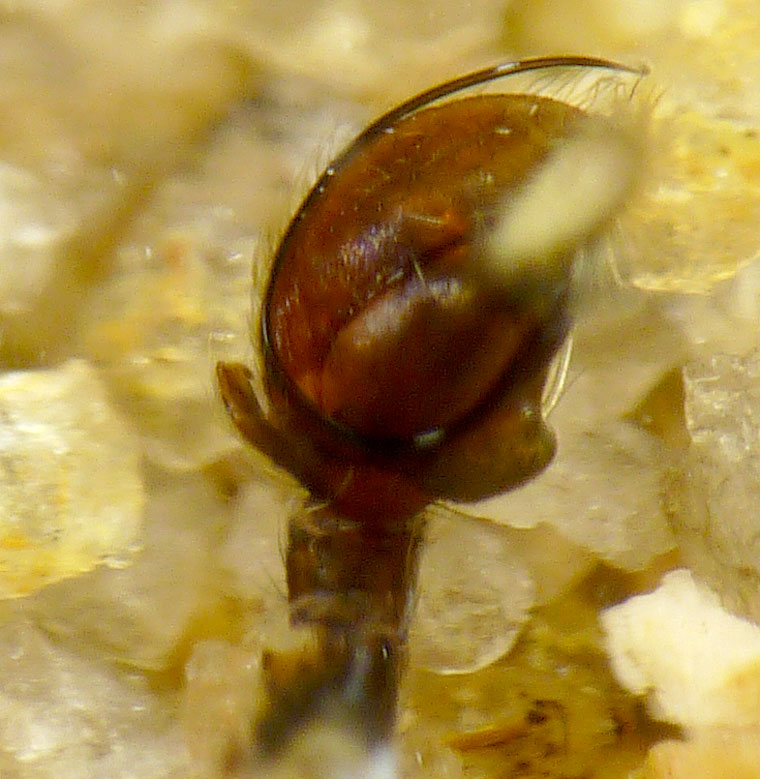
Male 1710 back (dorsal) showing white hairs

Male 230110 facing showing palps
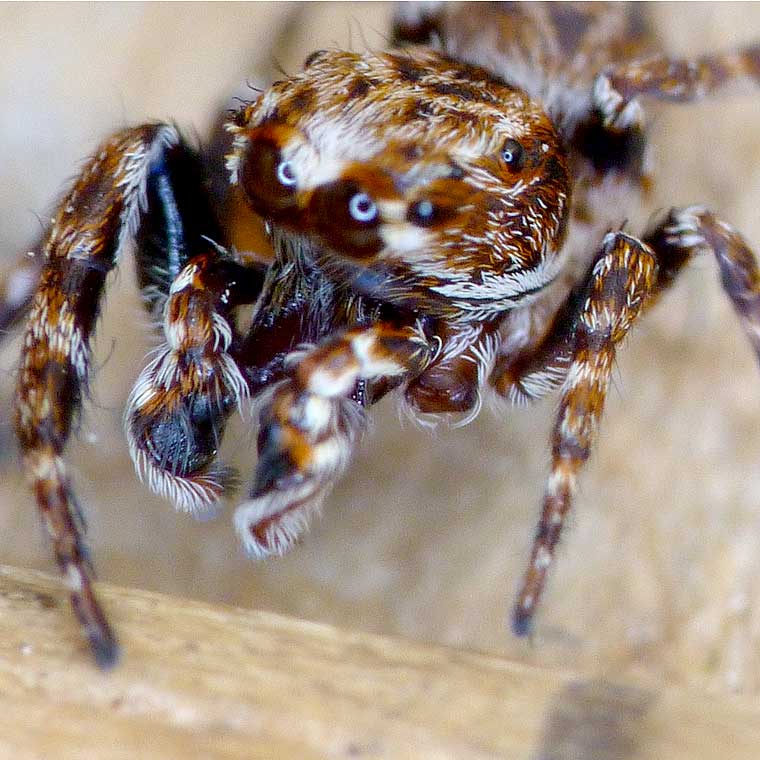
Male from above

Male GJA-5489 from above
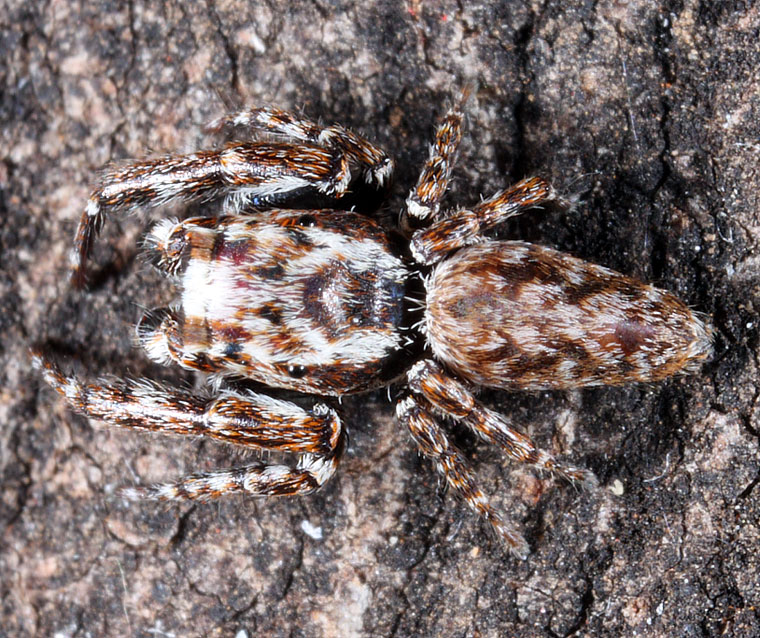
Female GJA5420 from above
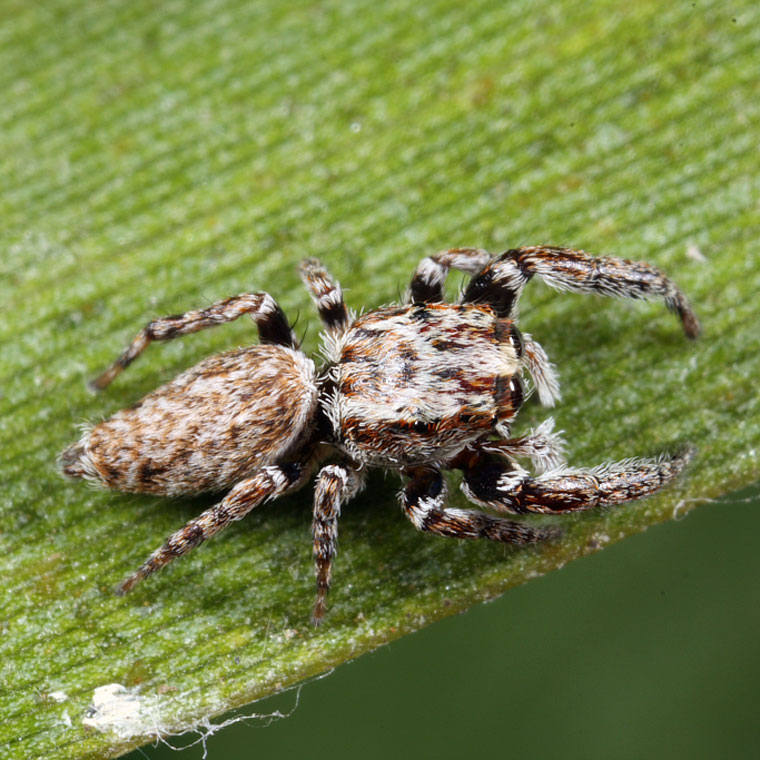
Female 1710 adult in alcohol from above
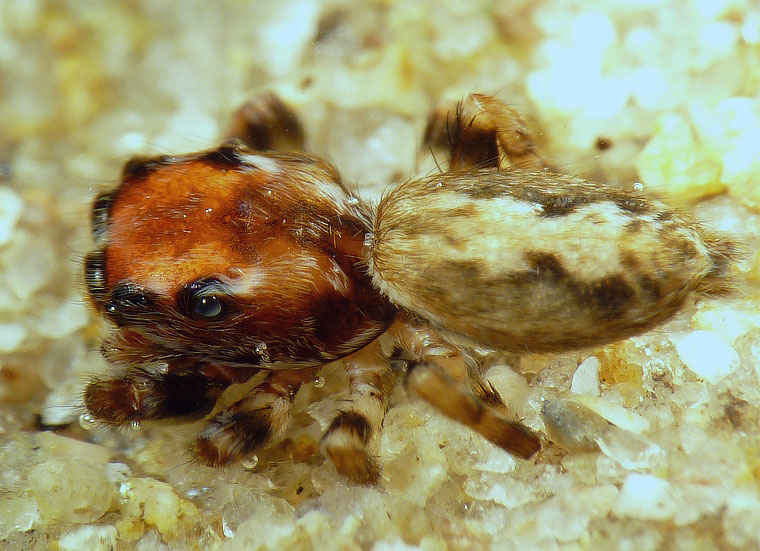
Female facing showing white hairs on clypeus
The clypeus is a part of the spider's face below the eyes.
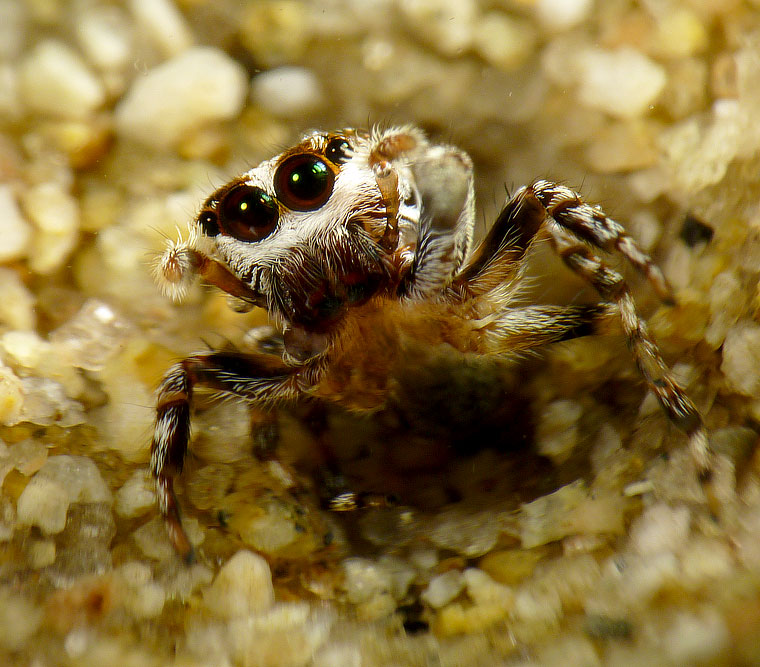
Female 1710 side view
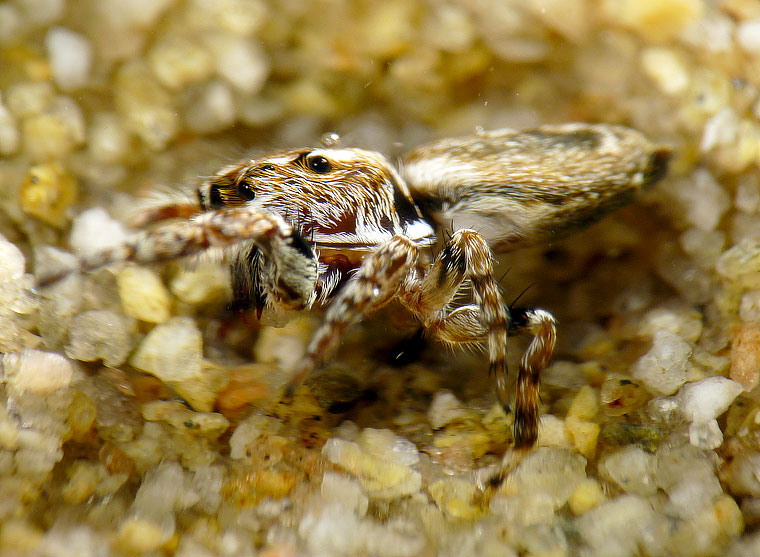
Female 1710 side view, white hairs faded, more orange
Same specimen as above. This is typical of even just a day in alcohol.

Female 1710 underneath
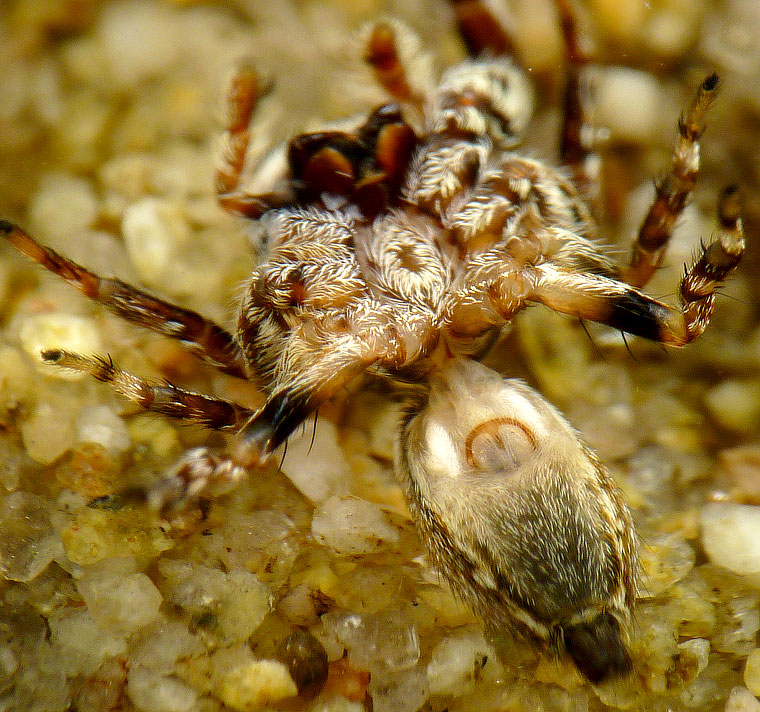
Female epigynum
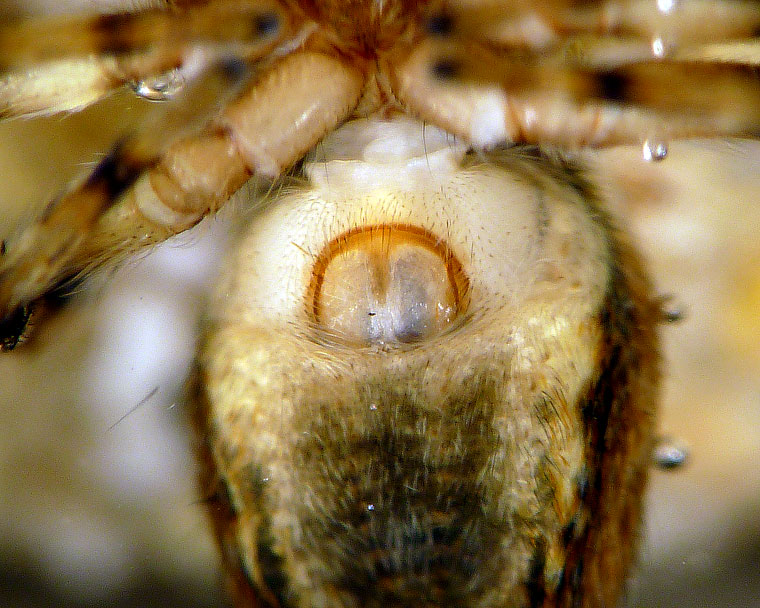
References
- Zabka 2003 - Zabka, Marek (2003): Salticidae (Arachnida, Araneae) from Oriental, Australian and Pacific Regions, Xvii. Paraphilaeus, A New Genus from Australia ANNALES ZOOLOGICI (Warszawa), 2003, 53(4): 489-507.

